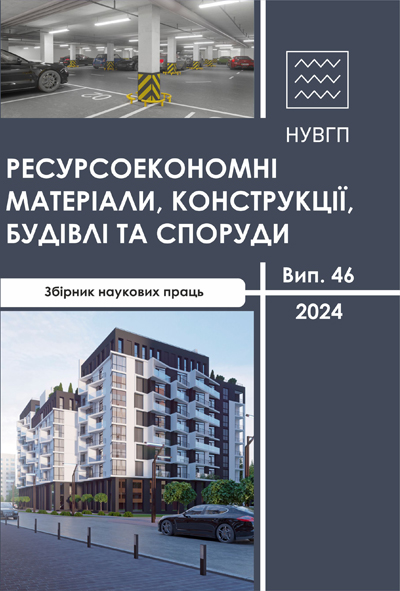VERIFICATION OF MODELING METHODS OF REINFORCED AND UNREINFORCED WOODEN BEAMS
DOI:
https://doi.org/10.31713/budres.v0i46.28Abstract
Based on the analysis of literary sources on the topic of wood testing with determination of relative deformations during testing. Research was established, which in the experimental part determined the relative deformations occurring in the compressed and stretched zone of wood. Also, it was established that the majority of experimental scientific works are devoted to establishing the failure load and maximum deflection. The number of scientific works where relative deformations were determined is quite limited. The article shows a comparison of the results of experimental studies of wooden beams with the theoretical results obtained by modeling them. As a result of the comparison, it was established that the methodological principles used for the modeling of bending wooden elements gave a good convergence. The work of T.A. Sasovskyi can be attributed to experimental studies of bending elements with the determination of relative deformations in wood. [10], and experimental studies of reinforced wooden beams were conducted by M.V. Polishchuk. [11] and M.I. Surmay [12]. It was established that the discrepancy between the theoretical values and the experimental values obtained by Sasovsky T.A. on average, they are up to 9%, for beam B-1 they are 8.8%, for beam B-2 - 3.2%, and for beam B-3 - 5.0%. The analysis showed that the average value of curvature deviations for the beams of Polishchuk M.V. is: GRB-12C -8.9%, GRB-16A – 14.2%, GRB-16B – 4.7%, respectively. And the deflection deviation is: GRB-12C -4.3%, GRB-16A – 3.9 %, GRB-16B –5.4%. For beams tested by M.I. Surmay, аccording to the discrepancy between experimental and theoretical data ranges from 4.7% to 10%. For beams reinforced with metal reinforcement, the discrepancy is up to 15%.The verification of the methods of modeling the work of reinforced wooden bending elements was carried out, which is based on the comparison of the data obtained on the basis of experimental and theoretical studies using "moment-curvature" and "moment-deflection" diagrams.

